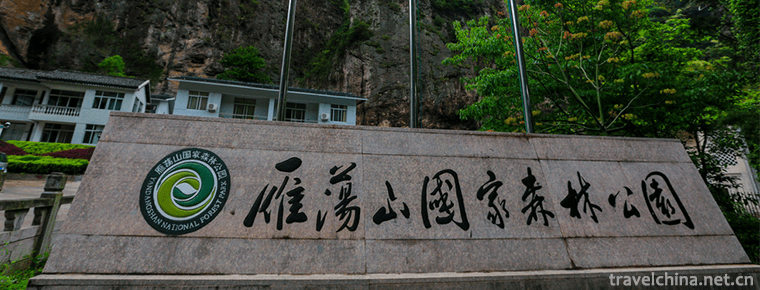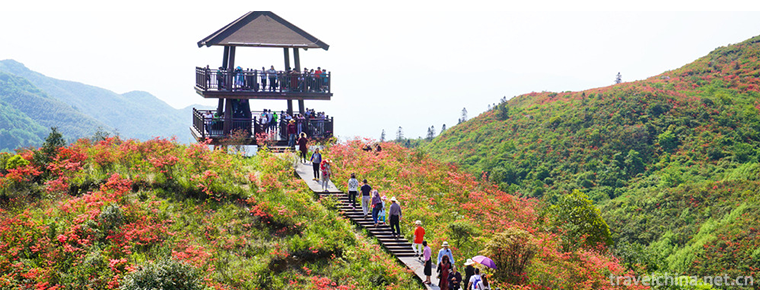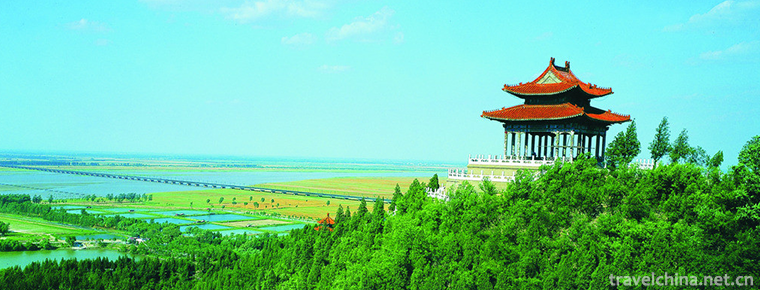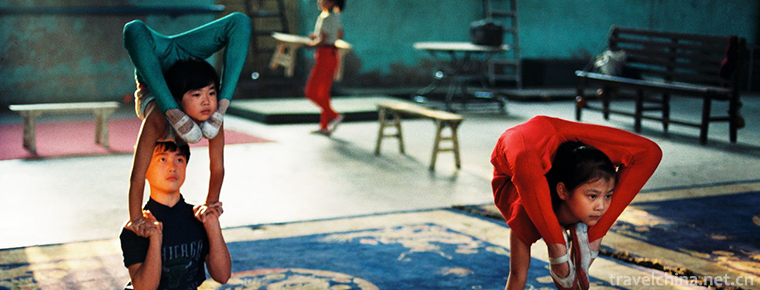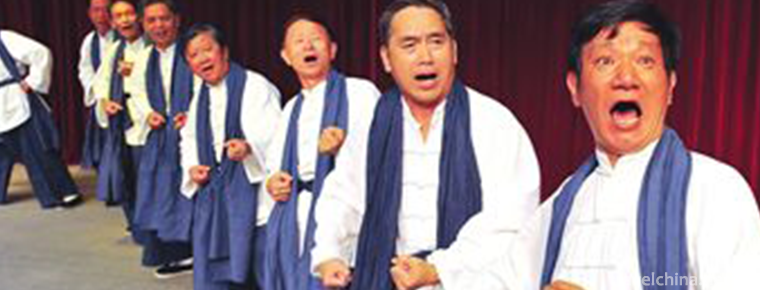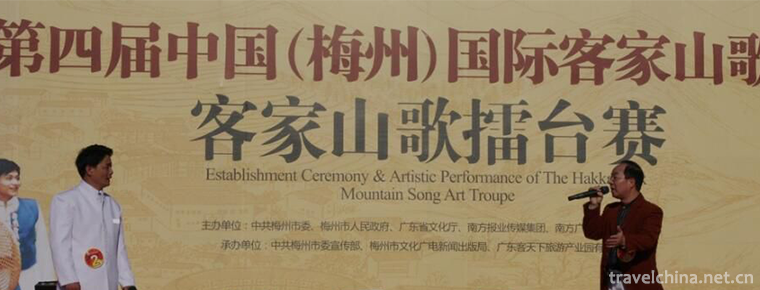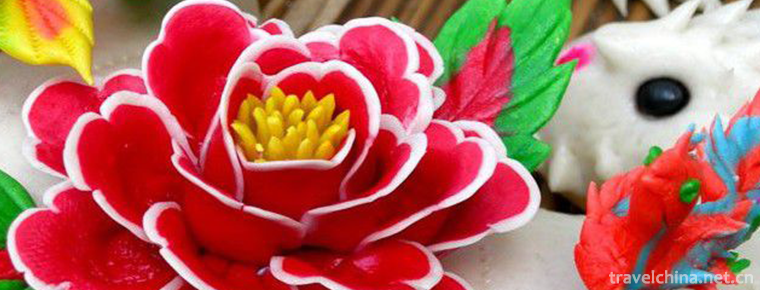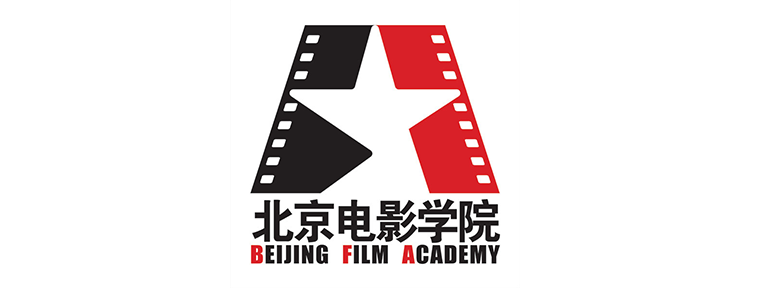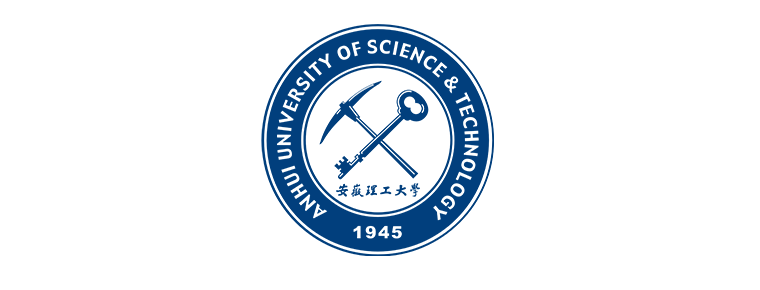National Palace Museum Taipei
Taipei national the Imperial Palace Museum, also known as the Taipei the Imperial Palace and Zhongshan Museum. It is one of the three major museums in China and one of the largest comprehensive museums in Taiwan Province. It is also an important place for studying the history of ancient Chinese art and sinology.
Taipei Palace Museum is located at 221 Zhishan Road, Section 2, Shilin District, Taipei City, Taiwan Province. It was built in 1962 and completed in the summer of 1965. The total area is about 16 hectares. In order to imitate the traditional Chinese palace architecture, the main building has 4 floors, white walls and green tiles, and the courtyard is plum blossom shape. The square in front of the courtyard stands five six-pillar archways, the whole building is solemn and elegant, full of Chinese characteristics.
The National Palace Museum in Taipei has a collection of old imperial collections from the Preparatory Office of the Nanjing National Central Museum, the National Palace Museum in Peiping and the National Peiping Library in Beijing, the Shenyang Palace Museum, the Summer Palace, the Jingyiyuan and the Zijian. The bronze wares of Shang and Zhou Dynasties, jade wares, ceramics, ancient literature, famous paintings and tablets are rare. The exhibition hall changes its exhibits every three months. By the end of 2014, the museum had more than 69.6 pieces of cultural relics.
In October 2015, the Palace Museum in Taipei celebrated the 90th anniversary of the Palace Museum in Beijing, coinciding with the 300-year visit of the Italian missionary Lang Shining to China. He borrowed 11 Lang Shining's paintings from the Palace Museum in Beijing and other businesses to fully demonstrate the achievements and contributions in the history of cultural exchanges between China and the West in the 18th century. The exhibition ended on January 6, 2016.
In 1911, Qing emperor Pu Yi abdicated. At the beginning of the founding of the Republic of China, Puyi and the government of the Republic of China signed the Preferential Conditions for the Qing Dynasty. The honorable name of the Qing Emperor was still alive and well. The Qing Emperor, among other foreign monarchs, temporarily lived in the Forbidden City and later moved to the Summer Palace.
In 1914, the government of the Republic of China relocated the relics of the Jehol Summer Resort and the Shenyang Palace Museum to the outer court of the Forbidden City and set up the "Antiquities Exhibition Hall" for open visit .
In November 1924, Emperor Puyi of the Qing Dynasty was expelled from the Forbidden City by Feng Yuxiang. During the period when Puyi lived in the Forbidden City, more than 1200 fine works of calligraphy and painting, good books and a large number of precious treasures were lost because of reward, official loan, auction and theft. Later, the clean up committee was set up in the Forbidden City to sort out the treasures in the palace.
In September 1925, the Committee on the preservation of Antiquities and antiquities was set up by Li Shi Zeng as chairman. The Qing Dynasty Rehabilitation Committee formulated the Provisional Organizational Outline of the Palace Museum, the Constitution of the Provisional Board of Directors of the Palace Museum and the Constitution of the Provisional Council of the Palace Museum. On October 10, the Palace Museum was established in the Forbidden City of Beijing (there was no Dean at this time) as the predecessor of the National Palace Museum.
In June 1928, members of the National Government Committee proposed by Hengyi to abolish the Palace Museum, set up a counter-productive treatment committee to deal with and sell the cultural relics of the Palace Museum, and proposed the establishment of a "National Central Museum" in Nanjing. Later, with the opposition of Zhang Ji, chairman of the Antiquities Preservation Committee, the two previous plans of Jing Hengyi were unsuccessful. At the same time, Yipeiji received the Palace Museum, promulgated the Organic Law of the Palace Museum and the Regulations of the Council of the Palace Museum, and succeeded the first president in February next year.
On the eve of the war of resistance against Japan, the the Imperial Palace Museum chose important cultural relics to move southward.
In 1931, after the September 18 Incident in Japan occupied the Northeast, the National Government began to plan to transport the museum relics southward. The following year, the Japanese occupied the Jehol River and invaded Peiping. The Palace Museum Council asked the museum to choose the best collection of cultural relics to be packed and stored in boxes and began the South Transportation.
On February 6, 1933, when the situation in North China was in an emergency, the first batch of cultural relics from the South arrived in Shanghai. During the period, there were five batches of 19,557 boxes of cultural relics from the south, including 6,066 boxes of cultural relics from the exhibition hall, the Summer Palace and the National Inspectorate. In February of the following year, the Provisional Organizational Regulations of the National Palace Museum of Peiping were promulgated. The Palace Museum was changed to the Executive Yuan and Ma Heng was appointed President.
In December 1936, the cultural relics moved southward from Shanghai to Nanjing, capital.
In January 1937, the Nanjing branch of the the Imperial Palace Museum, the Central Museum, was formally established. In August, the Shanghai War broke out, and the cultural relics moved southward from the first batch of 80 boxes of Nanjing cultural relics to Changsha, and then transported to Anshun, Guiyang, the next November (1944 to Baxian, Sichuan).
In November 1937, the second batch of 9369 boxes passed by water from the Yangtze River to Hankou, and in May 1939 they were moved to Yichang, Chongqing and Leshan, Sichuan. The third batch of 7286 boxes of cultural relics were transported from Nazhiliang to Baoji, Shaanxi Province by Longhai Railway, and then transshipped by truck to Chengdu via Hanzhong in July 1939, and then transported to Emei Temple for resettlement, setting up the Emei Office of the Palace Museum. At last, about 2900 boxes of cultural relics moved to Nanjing were left behind in Nanjing. After the fall of Peiping, there are still many cultural relics left in the Palace Museum of Peiping. During the period of the fall of Peiping, the counting of unregistered cultural relics continued and a number of precious cultural relics were collected extensively.
After the War of Resistance Against Japan, Hang Liwu asked Japan for many valuable books and works of art, which were then shipped to Taiwan. It contains 2,972 boxes of the Palace Museum in Peiping, 852 boxes of calligraphy, painting, porcelain and jade ware in the Central Museum, plus 5,422 boxes of good books from the National Peiping Library and treaty archives of the Ministry of Foreign Affairs. Hang Liwu was responsible for rushing these Palace Museum treasures to Taiwan at the end of the Kuomintang-Communist Civil War. The government of the Republic of China planned to transport the cultural relics to Taiwan five times, but only three times because of the sudden change of the war situation.
After the victory of the war of resistance against Japan in 1945, cultural relics in the South were transported to Chongqing centrally.
In June 1947, the South moving relics were transported back to Nanjing by Chongqing waterway and arrived in December.
With the victory of the 1948 People's Liberation War imminent, the National Government ordered the Palace Museum to select valuable cultural relics for transshipment to Taiwan by warship. The Kuomintang government began transporting the cultural relics of the Southern Migration of the Palace Museum, the cultural relics of the Preparatory Office of the National Central Museum, the good books of the National Central Library, the archaeological relics of the Institute of History and Language, Academia Sinica, and the archives of the Ministry of Foreign Affairs to Taiwan, and established the "Central Cultural Relics Joint Preservation Office". On December 27, the first 772 cases of cultural relics (including 320 cases from the National Palace Museum, 212 cases from the Preparatory Office of the Central Museum, 120 cases from the Institute of History and Language, Academia Sinica, 60 cases from the Central Library and 60 cases from the Ministry of Foreign Affairs) arrived at Keelung Port by Zhongding Ship. The National Government of Nanjing also ordered Ma Heng, the president of the Palace Museum in Peiping, to pack the essence of the cultural relics left in Peiping and to ship them by air in batches to Nanjing. Ma Heng, the president of the Palace Museum, postponed the packing for various reasons, so that none of the boxes was taken away.
On January 6, 1949, the second batch was transported by the Shanghai-Shanghai liner of China Merchants Bureau on January 6 and arrived at Keelung on January 9. The total number of boxes was 3502 (including 1680 boxes of the National Palace Museum, 486 boxes of the Preparatory Office of the Central Museum, 856 boxes of the Institute of History and Language, 462 boxes of the Central Library and 18 boxes of the Ming and Qing map of the Peiping Library). The third batch of cultural relics was shipped out by the Kunlun warship on January 29 and arrived at Keelung harbor on February 22, totaling 1244 cases. The commander of the army, Gui Yongqing, finally ordered the removal of his desk. However, due to the limited space of the ship, only 1244 cases (including 972 cases of the National Palace Museum, 150 cases of the Preparatory Office of the Central Museum and 28 cases of the Central Library) were shipped out. The remaining 728 cases of the National Palace Museum and 28 cases of the Central Library were forced to remain in Nanjing. So far, a total of 2972 boxes of cultural relics have been transported to the National Palace Museum. There are 11,178 boxes left in Nanjing, most of which were transported back to the Palace Museum in the 1950s. More than 2,000 boxes remain in Nanjing until now. To prevent the relocation of cultural relics, Tao Menghe, a Communist Party member of the Nanjing Central Museum, once mobilized the masses to stop, but failed.
On August 23, 1949, the cultural relics moved into Jifeng Village, Wufeng Township, Taichung County, and established the "National Central Museum Library Joint Management Office", which belongs to the Ministry of Education. Hang Liwu, Minister of Education, is also the chairman of the committee. In November, 68 boxes of unearthed cultural relics were rushed to Taiwan and stored in a warehouse in Taichung sugar factory.
In April 1950, the warehouse of Jilin village, Wufeng Township, Taichung suburb, was completed, and the cultural relics of Taiwan transported to the new storage.
In June 1951, a committee for checking the cultural relics in the two courts was set up. Scholars and experts were appointed as members of the committee to re-number and spot check the cultural relics in the boxes. It was not completed until 1954. This inventory also compiled the "spot check book", which became the original inventory of the cultural relics of the two houses.
In 1954, the National Central Library was reorganized in Taipei and the Joint Management Office began to publish important materials.
In 1956, the "North Ditch cultural relics exhibition room" was officially opened (after the earthquake was destroyed by 921).
In 1956, earlier than the Palace Museum in Taipei, the Kuomintang authorities established the first museum in Taiwan, the Museum of Cultural Relics and Fine Arts, to collect 38 boxes of cultural relics from Henan and 51 boxes of looted cultural relics returned by Japan, laying the foundation of the museum.
In 1957, under the auspices of the Asian Society, a small showroom was built outside the warehouse to display the cultural relics. Jiang Jieshi visited the Museum of cultural relics and changed the name of the museum to the Museum of history.
In 1965, a new museum was built at its present site. To commemorate the centenary of Sun Zhongshan's birth, the new site was named the Zhongshan Museum. After the Central Museum was merged into the Palace Museum, all the cultural relics of the Palace Museum were transported from Taichung to Zhongshan Museum in Taipei, which was officially opened on November 12, 1965. At this point, Taiwan's cultural relics were properly preserved.
In 1969, the National Palace Museum Collection Procedures were enacted to increase the collection in Taiwan. Between 1967 and August 2008, 1,651 copies were handed over through other agencies, 32,326 copies were donated and 12,751 copies were purchased, totalling 46,728 copies.
In the 1980s, with the rapid development of Taiwan's Museum industry, themed museums have attracted people's attention. Museum of history is not backward in its own way, and its taste and strength are still at the forefront. In the late 1980s, the Taiwanese authorities opened up veterans to visit relatives in the mainland. The exhibition of photography of relatives visiting the mainland was launched in time by the History Museum, which caused a sensation to the whole island. With the deepening of cross-strait exchanges, Lin Fengmian's 90 Retrospective Exhibition, Li Keran's Painting and Calligraphy Exhibition and Fu Baoshi's Painting Exhibition have been launched.
In 1989, the National Palace Museum Management Committee hired more than 40 sociologists and experts to form a group of members to conduct an inventory inspection of the collection of cultural relics in the whole Palace Museum, which was completed in May 1991. The completion of the collection of cultural relics logon number sticker, cultural relics card photography and preservation of the status of understanding.
In 2000, Du Zhengsheng, an academician of Taiwan's Academy of Central Research, took over the presidency of the National Palace Museum in order to depoliticize, promote a multicultural view of both China and the world, and return to the essence of art and culture. Under the guidance of this policy, the collection will expand to Southeast Asia and the South Pacific in order to echo the inheritance relationship between Taiwan aborigines and South Island culture.
In 2002, the "Executive Yuan" of the Taiwan authorities passed the reconstruction case.
In 2006, with the renovation of the Palace Museum, the concept of "Old is New" was introduced to promote the collection through marketing. Referring to the image licensing method of the French International Federation of Museums, and drawing on the provisions of Article 69 of the Civil and Capital Law, the fees for image licensing are formulated.
In 2007, Taiwan's "Executive Yuan" proposed to amend the Forbidden City Ordinance to change the collection of "Chinese" cultural relics to "domestic and foreign cultural relics", which was vetoed by the Legislative Yuan.
On February 14, 2009, Zhou Gongxin, President of the Palace Museum of Taipei, took a delegation to visit the Palace Museum of Beijing in mainland China for the first time to open cross-strait exchanges. The Palace Museum of Beijing will also visit Taiwan in March. The "Yong Zheng Exhibition", held in Taipei's the Imperial Palace in October, will become the touchstone for cooperation between the two sides of the Taiwan Straits.
On March 1, 2009, Zheng Xinmiao, President of the Palace Museum of Beijing, led a delegation to Taipei, where they will pay a special visit to the Palace Museum of Taipei. This is also a return visit to Zhou Gongxin's first visit to the Palace Museum of Beijing as President of the Palace Museum of Taipei half a month ago.
In 1964, the the Imperial Palace Museum of Taipei began its construction. In 1966, the expansion project of the first and second wing of the new museum was completed.
In 1971, the second phase of the expansion project was completed from the two wings of the new hall forward expansion, showroom area reached 8,777.41 square meters.
In October 1983, the memorial hall of Mr. Zhang Daqian was set up.
In 1984, the third phase expansion project was opened by the new administrative building of the Imperial Palace. Warehouses and exhibition halls should be protected by measures such as constant temperature and humidity, fire and damp proof, shockproof and burglar proof. Similar to the Western Room of Qianlong Heart-nourishing Hall, Sanxi Hall is set up in the main hall. In the next year, the best garden was built in the Song Ming garden.
In 1994, Qin Xiaoyi, President of the Taipei Museum of the Imperial Palace, put forward the idea of reconstructing. Next year, the fourth phase expansion project library and literature building was completed and used in the same year.
In 2000, Du Zhengsheng took over the presidency of the Palace Museum. He planned to carry out the fifth phase of the expansion and renovation of the Palace Museum and promote the planning and establishment of the southern courtyard of the Palace Museum.
In February 2007, the expansion and renovation of the main hall was completed. The exhibition space reached 9,613.91 square meters, while the public space for non-professional exhibitions increased to 10,656.98 square meters and the administrative space to 8,852.69 square meters. In the same year, prosecutors investigated and dealt with malpractices in the reconstruction and expansion of the Palace Museum, in which the Palace Museum was successively involved as president and officials, a total of 15 people were prosecuted.




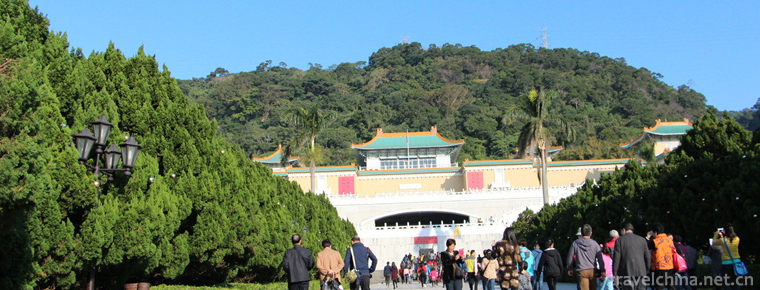
-
Yandang Mountain Scenic Spot
Yandang Mountain, the first batch of national key scenic spots, has the titles of "Sanitary Mountain, Safe Mountain, Civilized Mountain", National Civilized Scenic Spot, National AAAAA Touri.
Views: 190 Time 2018-12-07 -
Tourist Hall of Shanghai Global Financial Center
Shanghai Global Financial Center is located at 100 Century Avenue, Pudong New Area, Shanghai. It is a skyscraper located in Lujiazui Financial and Trade Zone. It faces the hinterland of Pudong New Are.
Views: 87 Time 2018-12-19 -
Daweishan National Forest Park
Dawei Mountain is located in the boundary between Hunan and Jiangxi Province, the hinterland of Lianyun Mountains, the East is Tonggu County under the jurisdiction of Yichun City, Jiangxi Province.
Views: 125 Time 2019-01-07 -
Zhengzhou Yellow River Scenic Spot
The Yellow River Scenic Spot is located 20 kilometers northwest of Zhengzhou City, capital of Henan Province, on the Bank of the Yellow River. It is situated on Weiyueshan Mountain in the South and Ta.
Views: 231 Time 2019-03-18 -
Liaocheng acrobatics
Liaocheng acrobatics is a traditional folk acrobatics art in Shandong Province. Liaocheng is one of the birthplaces of Chinese acrobatics. In the late Neolithic period, Liaocheng was the main area whe.
Views: 147 Time 2019-05-13 -
Wharf song
The dock number is a traditional folk song in Shanghai. Singing in docks, cargo yards, loading and unloading, lifting, push and pull and other labor occasions. The main singing methods of wharf number.
Views: 97 Time 2019-05-16 -
Hakka Folk Songs in Meizhou
Meizhou Hakka folk song is a Hakka folk song sung in Meizhou City, Guangdong Province (Meijiang District, Meixian District, Xingning City, Wuhua County, Fengshun County, Dapu County, Pingyuan County, .
Views: 117 Time 2019-06-03 -
Dough Flowers
Flower, commonly known as "flower bun", belongs to the art of facial sculpture. There are weddings, funerals, birthday gifts, Festival buns. Flowers are made of ordinary flour and special fl.
Views: 97 Time 2019-06-05 -
Beijing Film Academy
Beijing Film Academy is a University of art with film history and profound film culture. Its predecessor is the Institute of Performing Arts founded in 1950. It was relocated in 1951 and renamed as th.
Views: 160 Time 2019-09-06 -
Anhui University Of Science & Technology(aust)
Anhui University Of Science And Technology is located in Anhui province. Huainan City Yes. Anhui higher education revitalization program Local characteristics High level University Construction, proje.
Views: 550 Time 2019-10-10 -
Siguniang Mountain Scenic Area
Siguniangshan scenic area, located in Siguniangshan Town, Xiaojin County, Aba Tibetan and Qiang Autonomous Prefecture, Sichuan Province, belongs to Qionglai mountain range of Qinghai Tibet Plateau, 220 km away from Chengdu..
Views: 149 Time 2020-11-06 -
Yibin secondary industry
In 2019, the total industrial added value of Yibin City is 99.082 billion yuan, an increase of 9.5% over the previous year, and its contribution rate to economic growth is 45.5%. At the end of the year, there were 824 Industrial Enterprises above Designated Si.
Views: 106 Time 2020-12-18
